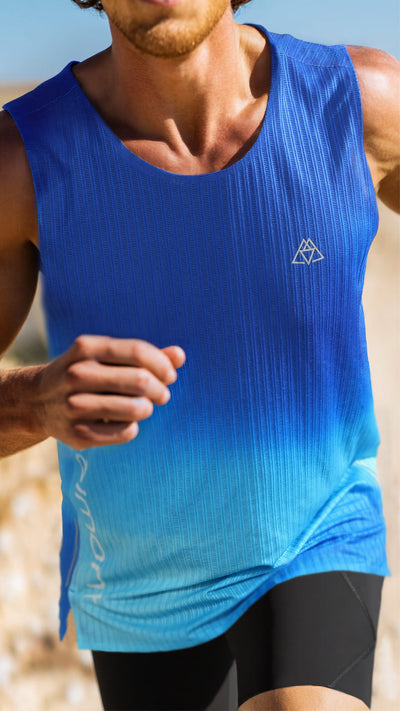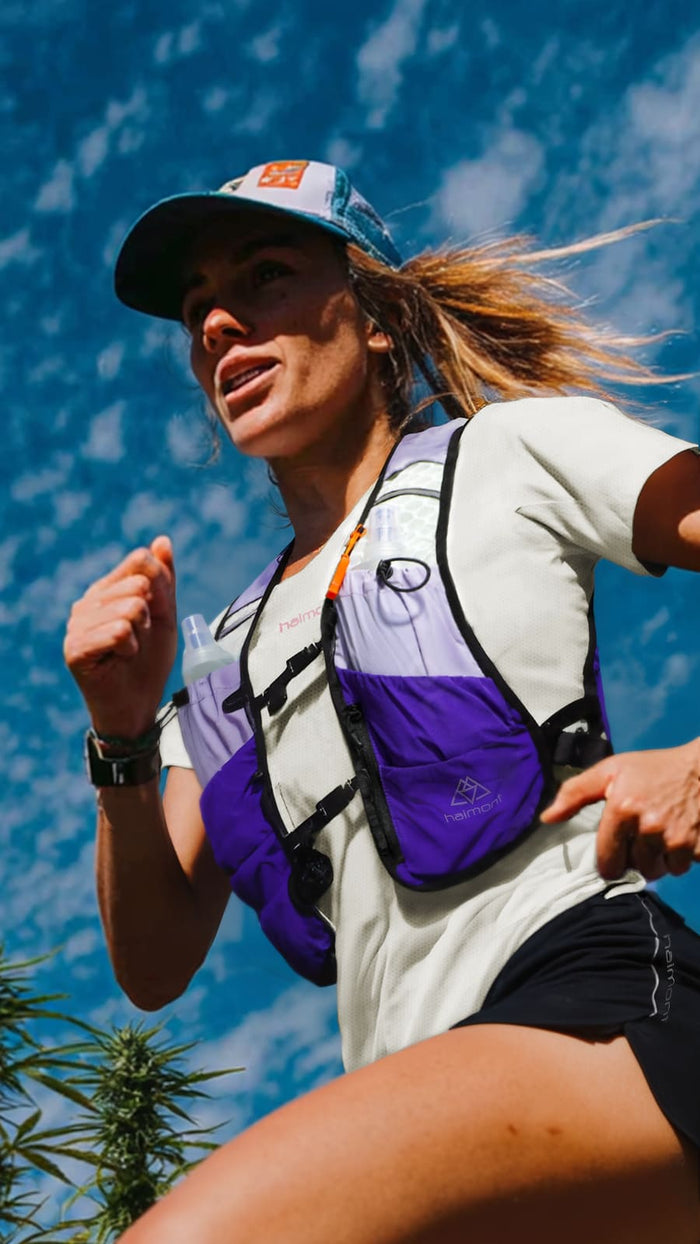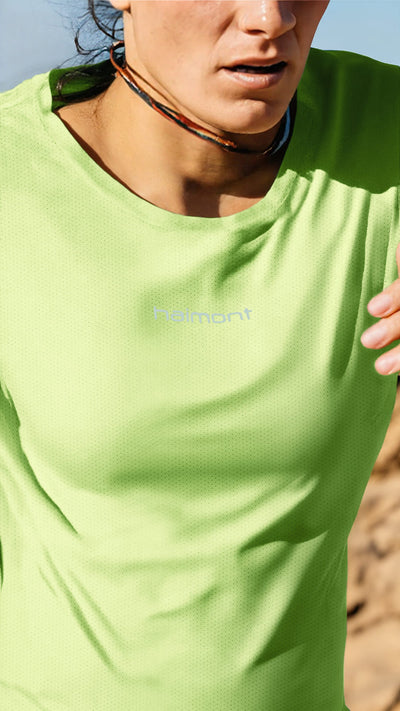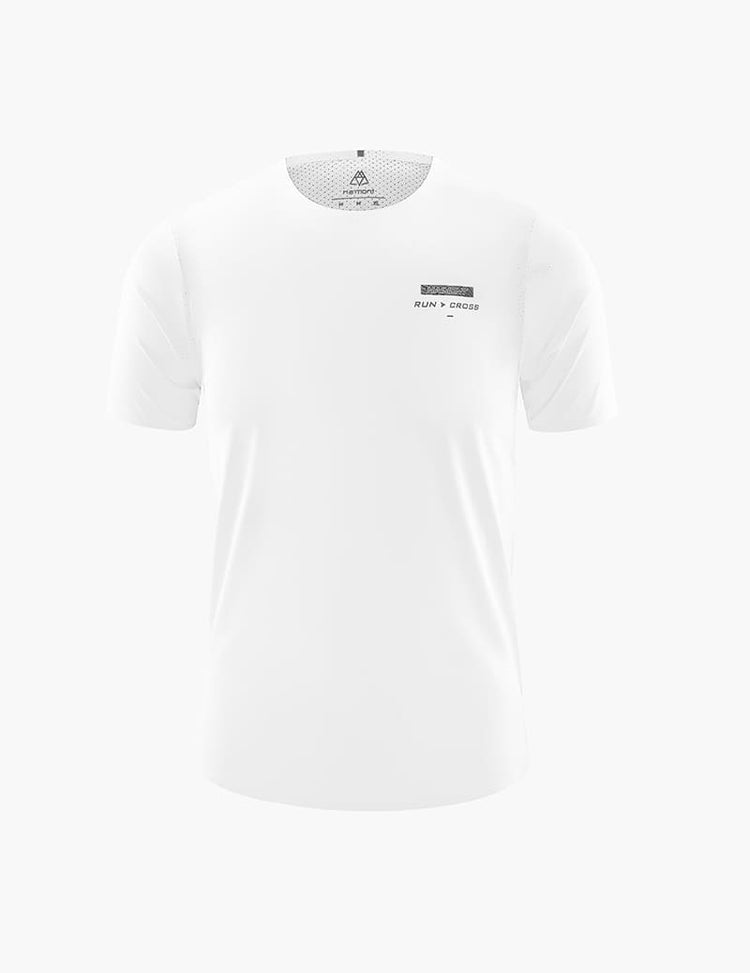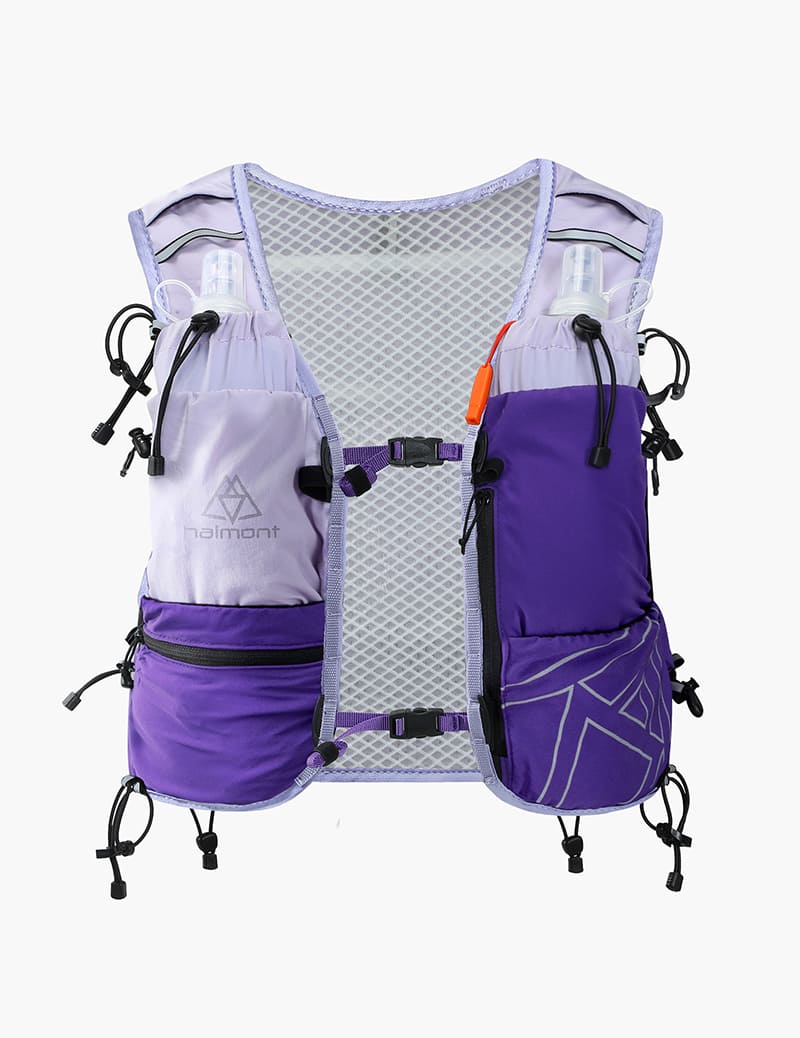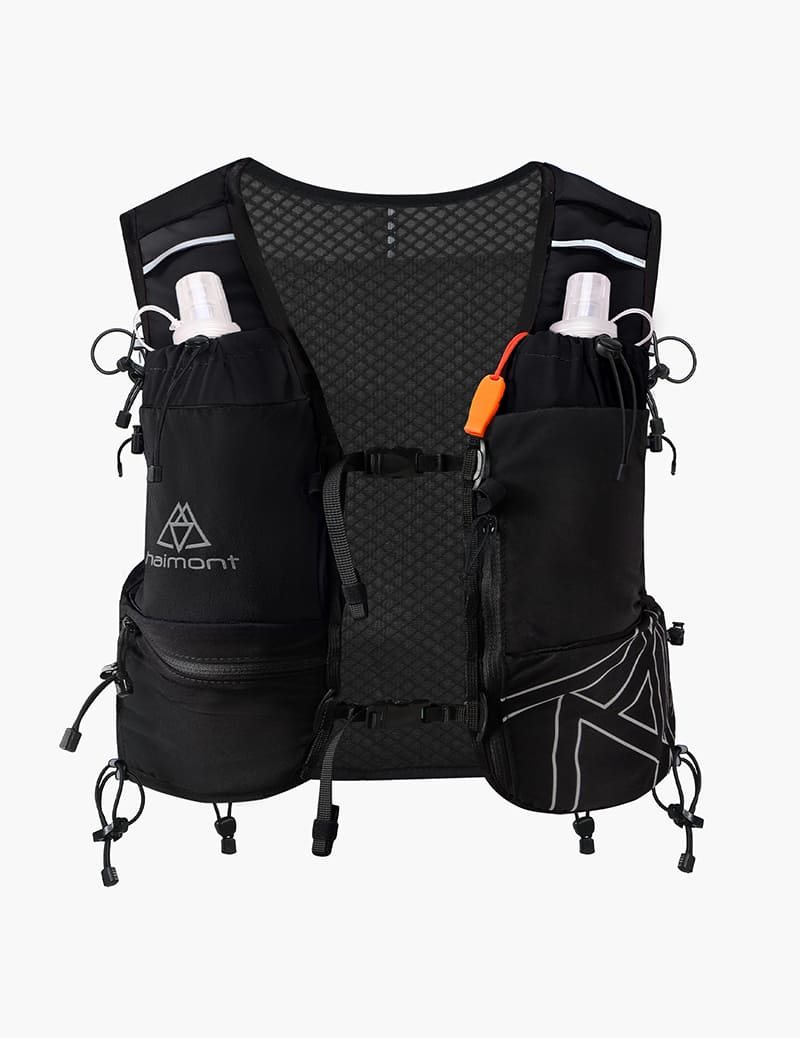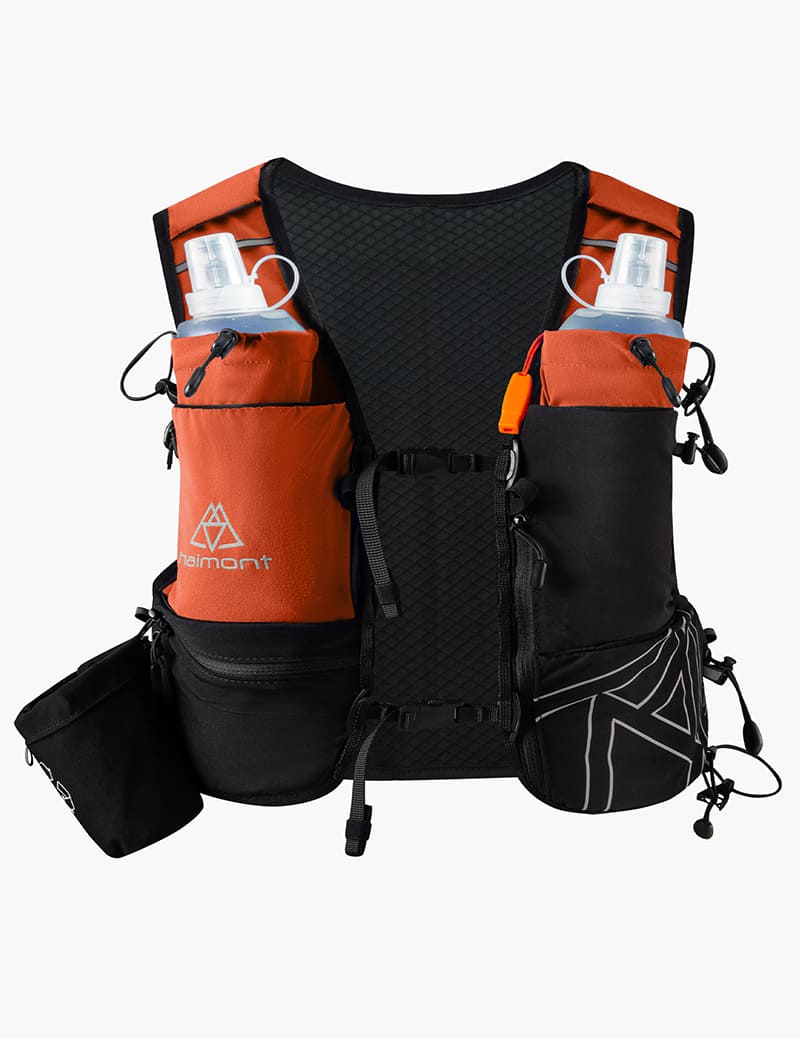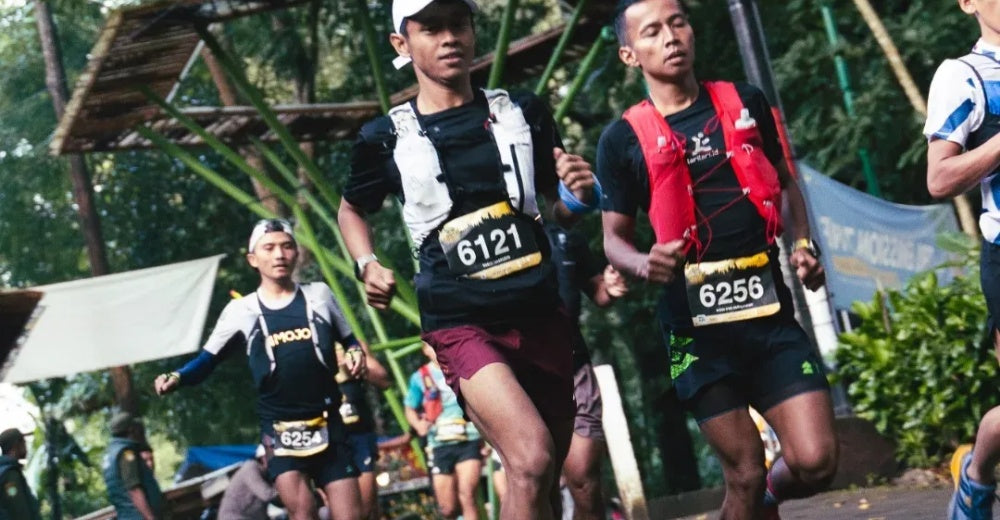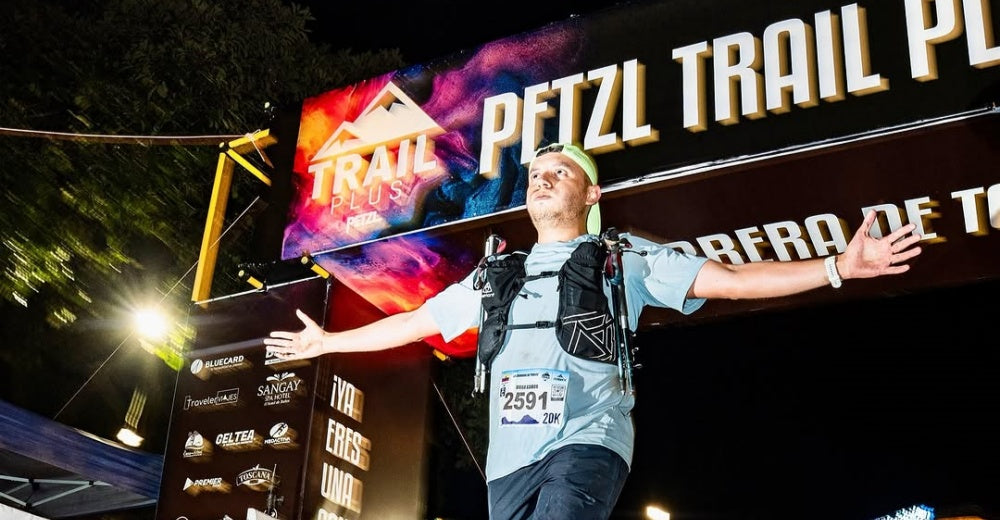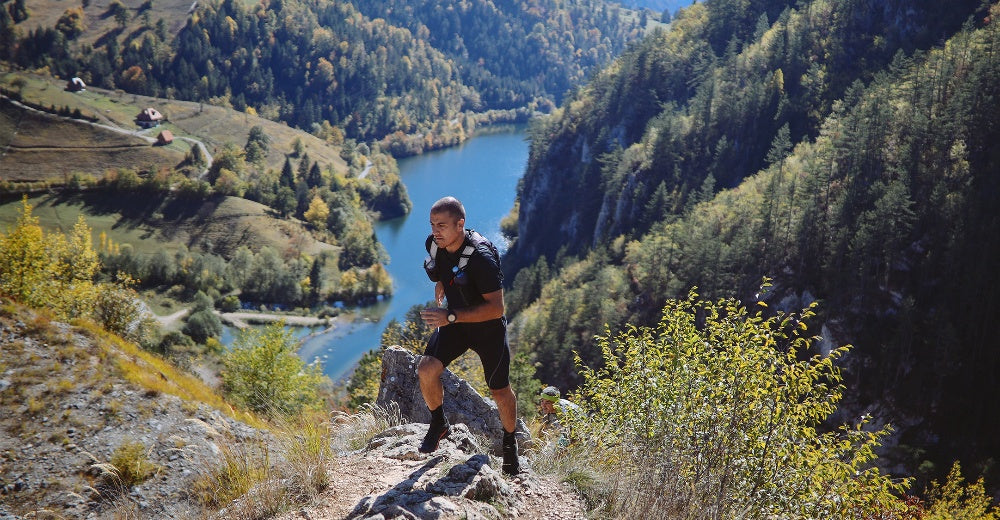Table of contents
Among dozens of UTMB® World Series events around the world, Ultra du Saint Jacques by UTMB® is undoubtedly the one with the most humanistic and historical atmosphere. Its special feature lies not only in the complex terrain and beautiful scenery, but also in the soul it carries - the Way of Saint James (Chemin de Saint-Jacques). This ancient road has attracted countless pilgrims since the Middle Ages, and now it has become a running track for modern trail runners to measure their faith and persistence with their footsteps.
The starting point of the event is located in Le Puy-en-Velay in the Loire Department of France. This mountain town has been one of the starting points of the pilgrimage route since ancient times. The cobblestone streets, ancient churches and hills built of volcanic rocks constitute a unique historical landscape. The runners set out from here, running along the thousand-year-old ancient road, crossing rugged ridges, ancient villages and vast plateaus. Every step is a challenge to the body and a touch to the soul, as if they are having a dialogue across time and space with countless historical pilgrims.
Ultra du Saint Jacques is not only a trail running race, but also a deep exchange between the body and the land, the soul and history. Here, the wildness of nature and the warmth of human civilization are interwoven into poetry. You will face the wind on the plateau, the rain in the canyon, and you will also harvest the sunrise in the quiet morning and the whispering stream beside the ancient bridge - and all of this, only those who really set foot on this road can feel the soul-stirring tranquility and magnificence.

Starting point: Le Puy-en-Velay (0KM) — Saint-Privat-d’Allier (about 22KM)
Terrain overview and route description:
The race starts from the historic French city of Le Puy-en-Velay, one of the four major pilgrimage starting points of the famous St. James Way in Europe. The city is built on the mountain and is famous for the statue of the Virgin Mary on the top of the volcanic rock cone and the medieval church. The runners will set off in the early morning bells and cheers of the crowd, slowly ascending along the cobblestone streets, passing through the historic city and heading towards the mountains.
The first 5 kilometers are connected by urban roads and country roads, and then quickly enter the highlands where forest roads and pastures are combined, and begin a relatively continuous gentle slope ascent. On the way, you will pass through many ancient villages and farmlands, and there are many ridge paths with wide views. The surface is a mixture of grass-root dirt roads and gravel. The pedaling feeling is relatively soft, but you need to pay attention to the grip.
Climbing from Le Puy, about 630 meters above sea level, to Saint-Privat-d’Allier, nearly 1,100 meters above sea level, the total ascent is about 600 meters, which is a relatively gentle and gradual warm-up climb.
Visual and cultural experience:
- The route overlooks the Loire Valley, which unfolds like a scroll under the morning mist.
- Pilgrim signs (shells and arrows) can often be seen in the village, interweaving with the footsteps of runners, forming a unique sense of communication - you are not running alone, but continuing the footprints of thousands of years.
- Residents will cheer for the runners next to some old churches and stone bridges, and feel the kindness and encouragement from the land.
Rhythm strategy and running suggestions:
- The first 3 kilometers are crowded sections, there is no need to rush, keep the heart rate in the Z2 zone (about 60-70% of the maximum heart rate) to save energy.
- The middle section of the gentle slope can adopt the light push and take away rhythm: keep switching between fast walking and small steps, do not pursue the pace, and pay attention to the stability of the breathing rhythm.
- The last 4 kilometers are a gradual descent, but they are highly technical, with gravel slopes and small bends. You should pay attention to lowering your center of gravity, controlling your stride, and protecting your knees.
Tips for participants:
- Familiarize yourself with the route map and altitude change map in advance, and make it clear that you should not rush blindly at the start, and save your strength to enter the plateau area in the middle and later stages.
- Make use of the town services (toilets, water replenishment) before departure to prepare. The supply station after departure is about 22KM, and you need to bring at least 1L of water in advance.
- There are often photography volunteers and cultural check-in points in this section, which is suitable for taking pictures, and you can also check in and start for yourself spiritually.
The first stage is a comprehensive experience section of physical warm-up, psychological activation, and cultural immersion. Here, you must adapt to the rhythm of the mountain road with your feet, and synchronize your mind with the beat of this thousand-year-old ancient road. And Haimont's lightweight equipment allows you to feel equipment is not a burden, but a helper for moving forward in the first step.
Crossing the plateau: Saint-Privat-d’Allier (22KM) → Le Sauvage (45KM)
Terrain overview and route description:
After leaving Saint-Privat-d’Allier, the runners will immediately face the most challenging technical downhill of this stage. This is a steep mountain road with a descent of more than 400 meters, passing through the pine needle ground in the forest and the gravel steep slope. Many bends have limited vision and pose a certain test to the knees and ankles.
At about 28KM, you will arrive at Monistrol-d’Allier - this is the low point of this section (about 620 meters) and a strategic water replenishment point. It is recommended to fully replenish and organize equipment here. After that, the track turns sharply upward and ushered in a continuous climb of about 600 meters, and finally entered the mixed area of plateau grassland and forest with an altitude of more than 1,200 meters until reaching Le Sauvage pasture.
The entire stage has a cumulative descent of about 600 meters and an ascent of about 900 meters. It is a core climbing section that requires both technology and endurance.
Scenery and cultural highlights:
- The Monistrol-d’Allier Canyon section is visually stunning: the river in the canyon is surging, the ancient stone bridge spans it, the cliffs on both sides are sandwiched, and the scenery is primitive and wild.
- On the way to the climbing section, you will pass through many remote pastures and abandoned monastery ruins, which makes you feel like you have walked into the depths of time.
- As a highland pastoral area, Le Sauvage not only has traditional stone houses and church ruins, but also serves as an important transit point for pilgrims to stay overnight.
Rhythm strategy and running suggestions:
22KM-28KM: Technical downhill section
Keep the center of gravity down, avoid leaning forward or braking on the ground, and bend your knees slightly to share the impact.
You can use trekking poles as an aid to share the impact of your legs.
Don’t rush, but be steady. It is more important to step firmly on each step than to rush for time.
28KM-45KM: Long-distance continuous climbing
It is recommended to adopt a running and walking strategy, running in small steps when the slope is gentle, and walking quickly when the slope is steep.
Rehydrate every 15-20 minutes, and consume energy gels or solid food every 60 minutes to prevent energy collapse caused by continuous climbing.
Tips for participants:
- Monistrol-d’Allier is the key point for supply and strategy switching. It is recommended to use 3-5 minutes to make system adjustments: eating, rehydrating, checking shoelaces, and changing equipment.
- This section is prone to mental fatigue. It is recommended to prepare 1-2 refreshing music/podcasts (single earphones can be used) to cut off the fatigue cycle.
- Practice the long-term uphill rhythm in a fatigued state in advance to train the efficiency of weighted fast walking.
This stage is a real test of endurance and technology, and it is the turning point of Ultra du Saint Jacques. Keeping calm in the canyon and sticking to the rhythm on the plateau is the key to completing this journey. Haimont's full-scene trail running equipment will escort you every step from the bottom of the valley to the plateau, allowing you to move forward freely without fear of challenges.

Mountain Wind Trial: Le Sauvage (45KM) → Saugues → Chanaleilles (75KM)
Topography and route description:
This is a typical plateau transition zone: starting from Le Sauvage, runners will leave the tree line area and enter the open wind area of the Margeride Plateau. The path extends between grasslands, hills and low shrubs, gradually losing visual shielding, and being exposed to strong winds and ultraviolet rays.
The terrain ups and downs from the first half to Saugues (about 60KM) are relatively gentle, but there are often headwinds. The second half enters a gravel path with steeper slopes and more frequent changes in direction, slowly rising along ancient roads and field trails, and finally reaching Chanaleilles at an altitude of more than 1,200 meters.
The total climb of the entire section is about 900 meters and the descent is 650 meters, but what is more challenging is the torment of the mountain wind and the feeling of spiritual isolation.
Stage features and sensory experience:
- The route mostly follows the ancient pastoral path and pilgrimage stone path, and you can see the dilapidated stone walls and the remains of the shelters from centuries ago.
- 5 kilometers away from Saugues is the famous La Tour des Anglais. The isolated tower witnesses history and storms, and is a good place for photography and breathing.
- The weather changes drastically. The highland sunshine often turns into low-temperature mountain wind around noon, and runners need to flexibly adjust their equipment.
Rhythm strategy and supply guidance:
Recommended strategy: Steady speed up + staged advancement
45-60KM: Maintain the endurance zone pace as a transition stage to digest the fatigue of the previous stage.
60-75KM: Appropriately speed up to find the rhythm, enter the warm-up state before night running, and establish basic kinetic energy for the night challenge after 75KM.
Supply suggestions:
Saugues supply point (about 60KM) is a strategic hub station. It is recommended to replenish heat energy, change shoes and socks, and check the body here;
Replenish carbohydrates and fat energy (such as rice balls and nut butter) at the same time to reserve slow-release energy for the subsequent night stage.
Runner's Tips:
- This is a mind screening section: the open scenery brings visual shock, but it may also lead to amplified loneliness. It is recommended to try to use rhythmic music or voice recording to relieve emotional fluctuations.
- Wind force judgment rule: If the figure of the runner in front is unstable and the flag swings violently, replace the windproof layer immediately.
- Saugues is the last supply point during the day for many runners. It is recommended to do an equipment re-inspection + night strategy preparation here, replenish caffeine, adjust the headlight, and prepare to enter the night of faith.
This 30 kilometers is not only a geographical transition section, but also a physiological and psychological turning point. It makes people realize that persistence is not just an emotional outburst before the sprint, but a sober choice for every step forward. And every windproof, energy storage, and protective gear system polished for you by the Haimont equipment team is your best ally in fighting the mountain wind trial.
Faith in the Dark: Chanaleilles (75KM) → Saint-Alban-sur-Limagnole (100KM)
Terrain overview and route description:
As runners set off from the Chanaleilles supply point, this section of the race officially enters the night stage. Most participants will cross this section at dusk or during the night. At first, it is a gentle slope and stone road in the forest, and then enters the dense forest on the plateau. The path is sometimes wide and sometimes narrow, and the ground is a mixture of soil, pine needles and gravel. Near 85KM, there is a steep downhill slope, and then it turns into a hidden pasture path in the valley.
The entire section has a cumulative climb of about 700 meters and a descent of about 950 meters. Although the terrain is not as steep as the previous section, it is a deep test of the mind under the condition of low temperature at night, limited vision and physical fatigue.
Stage features and sensory experience:
- Before and after 85KM, you can see a large area of black pine forest, thick fog is easy to rise, and there are reflective flags on the path to indicate the way ahead, as if you are walking through a mysterious forest.
- The breeze rolls up the grass slope, and the sound of water echoes beside the horseshoe pit. The ears are particularly sensitive in the invisible world. Many runners call this the loneliest but also the most sacred stage.
- The route vaguely interweaves the ancient pilgrim's stone bridge and the shepherd's shelter. After lighting the headlamp, the light beam in front is like illuminating the faith in the heart.
Rhythm strategy and psychological confrontation:
Recommended strategy: 80KM before and after is the energy saving period, and 85KM after is the stable advancement period
Maintain a uniform heart rate Z2-Z3 operation to avoid excessive force causing a collapse in the second half.
It is recommended to adopt the **headlight illumination + the same group partner walk** strategy for night travel to reduce route deviation and psychological panic.
Use trekking poles to reduce knee impact, especially in the downhill section.
Tips for dealing with night mood swings:
Set yourself next supply point as the target unit instead of how many kilometers are left.
Play a familiar voice or music at every 5-kilometer supply point to awaken emotional motivation.
Take small bites of salty food or chew tablets to awaken nerve reactions and resist mild dehydration and fatigue at night.
Tips for runners:
- The night running collapse point is often between 85-90 km. Some runners will experience hallucinations, aphasia, vomiting and other symptoms. At this time, it is better to slow down rather than rush. Actively replenishing electrolytes and calories is the key to reversing the state.
- You may wish to write a small note of your original intention before departure, hide it in your backpack, and take it out and read it at the critical point of 90 km to awaken your inner beliefs.
- If you feel very bad, you can take a forced rest for 10-15 minutes at the Saint-Alban-sur-Limagnole supply station. Hot soup + change of clothes are the guarantee for the sprint in the latter stage.
The Chanaleilles to Saint-Alban-sur-Limagnole stage is a transition from a physical competition to a journey of faith. When night falls, the professionalism of the equipment, the stability of the rhythm and the inner fire become your only reliance. Haimont's professional off-road equipment is the light that illuminates the night, leading you step by step through the darkness and towards the firmness and freedom before dawn.
Faith in the Dark: Chanaleilles (75KM) → Saint-Alban-sur-Limagnole (100KM)
Terrain overview and route description:
As runners set off from the Chanaleilles supply point, this section of the race officially enters the night stage. Most participants will cross this section at dusk or during the night. At first, it is a gentle slope and stone road in the forest, and then enters the dense forest on the plateau. The path is sometimes wide and sometimes narrow, and the ground is a mixture of soil, pine needles and gravel. Near 85KM, there is a steep downhill slope, and then it turns into a hidden pasture path in the valley.
The entire section has a cumulative climb of about 700 meters and a descent of about 950 meters. Although the terrain is not as steep as the previous section, it is a deep test of the mind under the condition of low temperature at night, limited vision and physical fatigue.
Stage features and sensory experience:
- Before and after 85KM, you can see a large area of black pine forest, thick fog is easy to rise, and there are reflective flags on the path to indicate the way ahead, as if you are walking through a mysterious forest.
- The breeze rolls up the grass slope, and the sound of water echoes beside the horseshoe pit. The ears are particularly sensitive in the invisible world. Many runners call this the loneliest but also the most sacred stage.
- The route vaguely interweaves the ancient pilgrim's stone bridge and the shepherd's shelter. After lighting the headlamp, the light beam in front is like illuminating the faith in the heart.
Rhythm strategy and psychological confrontation:
Recommended strategy: 80KM before and after is the energy saving period, and 85KM after is the stable advancement period
Maintain a uniform heart rate Z2-Z3 operation to avoid excessive force causing a collapse in the second half.
It is recommended to adopt the **headlight illumination + the same group partner walk** strategy for night travel to reduce route deviation and psychological panic.
Use trekking poles to reduce knee impact, especially in the downhill section.
Tips for dealing with night mood swings:
Set yourself next supply point as the target unit instead of how many kilometers are left.
Play a familiar voice or music at every 5-kilometer supply point to awaken emotional motivation.
Take small bites of salty food or chew tablets to awaken nerve reactions and resist mild dehydration and fatigue at night.
Tips for runners:
- The night running collapse point is often between 85-90 km. Some runners will experience hallucinations, aphasia, vomiting and other symptoms. At this time, it is better to slow down rather than rush. Actively replenishing electrolytes and calories is the key to reversing the state.
- You may wish to write a small note of your original intention before departure, hide it in your backpack, and take it out and read it at the critical point of 90 km to awaken your inner beliefs.
- If you feel very bad, you can take a forced rest for 10-15 minutes at the Saint-Alban-sur-Limagnole supply station. Hot soup + change of clothes are the guarantee for the sprint in the latter stage.
The Chanaleilles to Saint-Alban-sur-Limagnole stage is a transition from a physical competition to a journey of faith. When night falls, the professionalism of the equipment, the stability of the rhythm and the inner fire become your only reliance. Haimont's professional off-road equipment is the light that illuminates the night, leading you step by step through the darkness and towards the firmness and freedom before dawn.

Glorious Finale: Saint-Alban-sur-Limagnole (100KM) → Saint-Jacques-des-Blats (123KM)
Terrain Overview and Route Description:
When this stage starts, the runners have already run 100 kilometers, and their physical and mental strength are close to the limit. The track starts from Saint-Alban-sur-Limagnole and follows the ancient pilgrimage route into the depths of the Central Plateau. First, there are gently undulating pastures and forest roads, and then enter the volcanic hills. There is a final climb of about 300 meters before approaching the finish line until entering the mountain pass in front of the village of Saint-Jacques-des-Blats.
The overall cumulative climb is about 850 meters and the descent is about 700 meters. Among them, about 110KM-117KM is the key uphill section, where the field of vision begins to open up and the final valley can be seen from a distance, which is very ritualistic.
Scenery and cultural highlights:
- In the early morning or evening, light and shadows pass through the sparse woodlands and sprinkle on the grassy slopes, creating a wonderful atmosphere of running with the dawn.
- Many stone crosses and ancient post station ruins can be seen along the way, as if reminding you that you are walking on the Pilgrim's Glory Road.
- Runners will pass through the ancient pastures and mountain passes on the plateau, and see the valley where the destination is in the distance. What surges in their hearts is not only completion, but also fulfillment.
Rhythm strategy and sprint suggestions:
100KM-110KM: Adjustment and recovery section
Although the body is tired, this section is relatively gentle. It is recommended to keep the heart rate at the junction of Z2-Z3, that is, breathing but not collapsing.
Strategic fast walking + small step running is the most energy-saving way of advancement in this stage.
110KM-117KM: Glory climbing section
It is not recommended to attack fiercely. Use a stable step frequency and trekking poles to help push up to control lactic acid accumulation.
You can use caffeinated energy gels to increase alertness and motivation, and accumulate energy for the sprint.
117KM-123KM: Downhill to the finish line
Emotions will fluctuate strongly, be careful not to go downhill emotionally.
Keep your core stable, relax your shoulders, and greet the last few kilometers with a downhill smile.
Tips for participants:
The finish illusion often appears around 117KM. You know the finish line is not far away, but your body refuses. Set the **last two energy gel time points** in advance to suppress the sense of collapse with a sense of ritual.
It is recommended to play motivational voice or set heart anchor music in the last 10KM to find traction on the edge of psychological collapse.
1KM before reaching the finish line, you can organize your equipment, wear a brand flag or national flag, and leave a complete shot for the glorious finish line shot - this is your honor moment.
The last section of Ultra du Saint Jacques by UTMB® is not only the end of the track, but also a turning point in the heart. After more than 120 kilometers, every kilometer is no longer the distance completed by your feet, but the weight of faith accumulated step by step. Haimont's professional trail running equipment will accompany you through this glorious final chapter, allowing you to greet the sunshine and applause before the finish line with the most determined attitude.
When facing the rich and varied tracks and harsh natural tests of Ultra du Saint Jacques by UTMB®, reasonable equipment selection is crucial. The terrain, climate and physical energy consumption characteristics of different stages determine the functional focus of the equipment. We will sort out the core equipment recommendations for each stage to help you prepare scientifically, travel light, and give full play to the potential of every kilometer.
Ultra du Saint Jacques by UTMB® Equipment Recommendations
|
Stage |
Key Conditions |
Recommended Gear |
Purpose / Function |
|
Start – Saint-Privat-d’Allier (0–22KM) |
Cold early morning, stone steps descent, slippery surfaces |
Trail running shoes, wind-resistant T-shirt, lightweight race vest |
Quick-dry and sweat-wicking for a fast start; stable fit to avoid bounce |
|
Saint-Privat – Le Sauvage (22–45KM) |
Steep climbs, strong sun exposure, slippery forest paths |
Trekking poles, sun hat, windproof arm sleeves |
Support on ascents, reduce knee strain, protect arms from sunburn |
|
Le Sauvage – Chanaleilles (45–75KM) |
Highland winds, alternating sun and cold |
Windproof soft shell, polarized sunglasses, compression calf sleeves |
Block wind, reduce eye strain, minimize muscle vibration and fatigue |
|
Chanaleilles – Saint-Alban (75–100KM) |
Night running, foggy forest trails, physical fatigue zone |
High-lumen headlamp, thermal mid-layer, salty snacks |
Long-lasting illumination, maintain core temperature, prevent nighttime energy loss |
|
Saint-Alban – Saint-Jacques-des-Blats (100–123KM) |
Pre-dawn chill, valley crossings, sprint finish |
Quick-dry top, spare dry socks, energy gels |
Stay light and dry, boost energy, allow fast gear switch for final push |
Summary of special function equipment (suitable for interspersed use throughout the process)
| Category | Product | Recommended Reason |
|---|---|---|
| Race Vest | Trail 5L (short course) / Trail 8L (full course) | Choose capacity based on race distance; body-conforming fit, bounce-free, multi-compartment design allows quick access to fuel and gear |
| Night Gear | 300+ lumen headlamp + spare batteries | Essential for forest trails at night; dual-light setup recommended; ensure at least 6-hour battery life |
| Bottom Wear | Anti-chafing trail shorts / compression tights | Prevents inner thigh chafing on long distances; supports knees and reduces muscle vibration |
| Poles | Foldable carbon fiber trekking poles | Crucial for reducing strain during early climbs and supporting tired legs on late downhills, especially at night |
| Fueling | Salty crackers, electrolyte tablets, caffeine energy gels | Stabilizes blood sugar and maintains nervous system function; small doses of caffeine are helpful after 70KM |
| Rain Protection | Lightweight, packable waterproof jacket | Though a summer race, mountain weather is unpredictable; rain gear is mandatory and must be easy to stow |
Haimont provides participants with a list of mandatory equipment that the Organizer requires each participant to carry (see below). All equipment on the mandatory equipment list must be carried during the race, even if the participant does not use it. Both hot weather and cold weather equipment are included in the mandatory equipment. Depending on weather conditions, the Organizer may require participants to carry one of these three additional items of equipment.
| Category | Item | Details / Recommendation |
| Basic Kit | Race bag | Must be able to carry all mandatory items |
| Cell phone (with LiveRun app activated) | Smartphone with LiveRun app installed and running; external battery highly recommended | |
| Personal cup (min. 15 cl) | No cups provided at aid stations | |
| Minimum water supply: 1 liter | Must be carried at all times | |
| 1 headlamp with spare batteries | Required for night running or low-visibility sections | |
| Survival blanket (min. 1.40m x 2m) | Standard emergency equipment | |
| Whistle | Often integrated into race vest sternum strap | |
| Self-adhesive elastic bandage (min. 100cm x 6cm) | For minor injury or joint support | |
| Food reserve | Recommendation: 800 kcal (e.g., 2 energy gels + 2 bars of 65g each) | |
| Waterproof jacket with hood | Must fully cover torso and be rainproof | |
| Cap, bandana, or Buff® | For sun, wind, or sweat management | |
| Identity document | Passport or national ID card required | |
| Warm Weather Kit (may be required) | Sunglasses | UV protection for exposed sections |
| Saharan cap or full head/neck cover | Protection from direct sunlight | |
| Sunscreen cream | Recommendation: SPF 50 or higher | |
| Minimum water supply: 2 liters | May be required in high-heat conditions | |
| Bad Weather Kit (may be required) | Protective glasses | For wind, rain, or debris protection |
| Hat | Insulation against cold | |
| Warm and waterproof gloves | Essential for wet and cold conditions | |
| Waterproof overpants | Paired with jacket for full body protection | |
| Additional warm second layer | Fleece or light insulated layer, compressible | |
| Sturdy, closed-toe trail-running shoes | With proper grip and foot protection; required in all conditions |
Ultra du Saint Jacques by UTMB® is not only an extreme challenge of physical strength and will, but also a deep dialogue across time, culture and nature. Every finisher is a person who writes his or her faith on the ancient pilgrimage road with his or her footsteps - that faith can be a goal, persistence, or a self that surpasses yesterday.
This road is not only for Saint James, but also for every trail runner who learns to listen to his or her heart between wind and rain and mountain ridges.
It tells us: the real strength is not how fast you run, but to be able to continue walking with a smile after falling. On this road of both pilgrimage and running, Haimont is always by your side. Whether it is a fitted backpack on a technical section, a windproof jacket in the cold wind of the plateau, or a stable headlamp before the sprint to the finish line, we use equipment to protect your every step of determination.
Let glory not only stop at the finish line - let passion be the reason for you to run thousands of miles.



